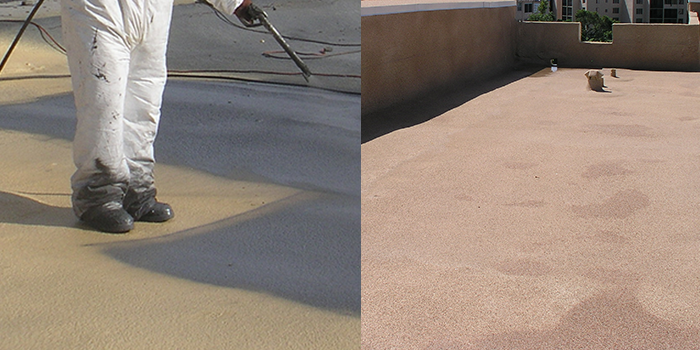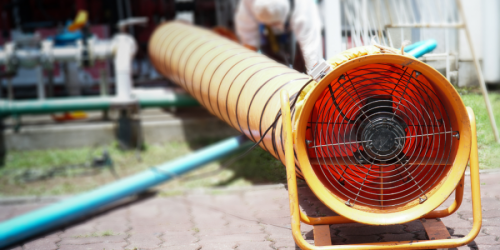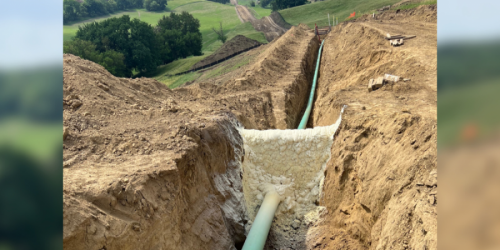SPF Roof Installation

Back to Education Center | Roofing Guide
Installing Spray Foam Roofing Systems
The installation of an SPF roof involves a set of procedures that varies slightly depending on the characteristics of the existing roof. Typically, the process can be broken down into three phases: prep work, foam application, and finishing work. It’s critical for SPF roof installers to be familiar with all state and local building codes when installing a roof, so as to ensure the materials and procedures meet the necessary local requirements. Existing SPF systems will need to be cleaned, primed, and recoated every 10-15 years. If the roof has been maintained properly, then a quality SPF roof could last up to 50 years or more.

Prepping the Roof Surface
Proper preparation of the substrate is perhaps the most important process in achieving a successful SPF roofing application. For proper adhesion, SPF requires a clean, dry surface that is free of contaminants. Often, a re-roofing application will involve the removal of some, or all, of the existing roof system to provide a clean surface to apply the SPF. Sometimes the removal process involves tearing off sheet materials like EPDM, while other times it can involve shoveling or vacuuming aggregate.

Installing the Roofing Foam
Generally speaking, applying spray foam requires a great deal of training and experience to assure the chemical is being mixed properly and the foam is being installed to a high level of quality. Applying roofing foam is considered to be more challenging than applying foam insulation, as installing and even surface is more difficult to do on horizontal substrates than vertical substrates. Companies throughout the industry provide training to new contractors.
Spray foam roofs are applied to a particular thickness defined by project specifications, typically applied in half-inch or one-inch layers known as “lifts” or “passes.” Thick roof specifications are applied in multiple passes, as are sections of the roof requiring significant flashing. SPF is sprayed on as a liquid, quickly rises (as foam) in seconds, and can be walked on in minutes.
Proper weather planning is also a must. Although there are many systems available to meet the various climate conditions, spray foam, like most other roofing materials, cannot be applied onto a wet or damp substrate, or else jeopardize adhesion and risk system failure. It’s critical to be fully aware of the forecast before and during the job, and to take into account weather volatility typical of your area.

Applying Protective Coatings and Granules
A spray foam roofing system cannot be installed without protection for the roof surface. Typically, spray foam roofs are protected by elastomeric coatings (silicone, acrylic, and polyurea, among other materials). In most cases, contractors must use specialized pumps to spray protective roof coatings. Polyurea, on the other hand, can be applied with the same plural-component equipment as SPF. Contractors either use a separate proportioner, or completely flush out the proportioner they use to apply foam before running polyurea chemical through it.
Like SPF, elastomeric coatings are applied in layers, albeit on a smaller scale. The thickness of elastomeric roof coatings are measured in mils (1/1000-inch). To determine how much coating material was installed in a given application, installers will often use gallons per square, which is the volume of coating in gallons applied per 100 square feet.





























